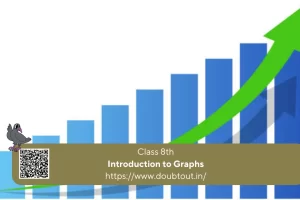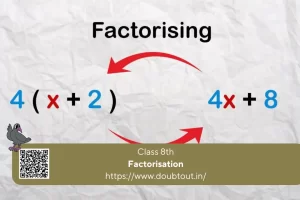
NCERT Solutions for Class 8 Maths 4 – Data Handling (Updated Pattern)

Students can also download the PDF of NCERT Class 8 Maths Solutions for Data Handling Chapter 4 or can view it online by following the links. Data Handling is an important concept that assures the uprightness of the research data. We have information in the form of a numerical figure, no matter which field we take. Every value of this kind is known as an observation. Usually, the set of all the observations is called data. Different data management methods are used to handle, termed as data, which will be discussed in this chapter as well as in the higher classes.
————Exercise 4.1————
1. A survey was made to find the type of music that a certain group of young people liked in a city.
An adjoining pie chart shows the findings of this survey. From this pie chart, answer the following:
(i) If 20 people liked classical music, how many young people were surveyed?
(ii) Which type of music is liked by the maximum number of people?
(iii) If a cassette company were to make 1000 CDs, how many of each type would they
make?

Solution:
(i) 10% represents 100 people.
⟹20% represents = (100×20)/10 = 200
∴ 200 people were surveyed.
(ii) Since 40% of the total people surveyed liked light music and no other form of song was liked more than that, we can conclude that light music is liked by the maximum number of people.
(iii) CDs of classical music = (10 × 1000)/100 = 100
CDs of semi-classical music = (20 × 1000)/100 = 200
CDs of light music = (40 × 1000)/100 = 400
CDs of folk music = (30 × 1000)/100 = 300
NCERT Solutions for Class 8 Maths Chapter 3 – Understanding Quadrilaterals (Updated Pattern)
2. A group of 360 people were asked to vote for their favourite season from the three:
seasons rainy, winter and summer.
(i) Which season got the most votes?
(ii)Find the central angle of each sector.
(iii) Draw a pie chart to show this information

Solution:
(i) According to the table given in the question, the winter season got the most votes.
(ii) Central angle of summer season= (90×360)/360= 90o
Central angle of rainy season= (120×360)/360= 120o
Central angle of winter season= (150×360)/360= 150o
(iii)

3. Draw a pie chart showing the following information. The table shows the colours preferred by a group of people.

Solution:
Here, central angle = 360o Total number of people = 36


4. The adjoining pie chart gives the marks scored in an examination by a student in Hindi, English, Mathematics, Social Science and Science. If the total marks obtained by the students were 540, answer the following questions.
(i) In which subject did the student score 105 marks?
(Hint: for 540 marks, the central angle = 360°. So, for 105 marks, what is the central angle?)
(ii) How many more marks were obtained by the student in Mathematics than in Hindi?
(iii) Examine whether the sum of the marks obtained in Social Science and Mathematics is more than that in Science and Hindi (Hint: Just study the central angles).

Solution:

(i) The student scored 105 marks in Hindi.
(ii) Marks obtained in Mathematics = 135 Marks obtained in Hindi = 105 Difference = 135 – 105 = 30
Thus, 30 more marks were obtained by the student in Mathematics than in Hindi.
(iii) The sum of marks in Social Science and Mathematics = 97.5 + 135 = 232.5 The sum of marks in Science and Hindi = 120 + 105 = 225
∴ the sum of the marks in Social Science and Mathematics is more than in Science and Hindi.
The Secret of Padmasana: Unlocking Meditation and Inner Balance with the Lotus Pose
5. The number of students in a hostel speaking different languages is given below. Display the data in a pie chart.

Solution:
NCERT Solution for Class 8 Maths Chapter 5 – Data Handling


—————–Exercise 4.2————–
1. List the outcomes you can see in these experiments.
(a) Spinning a wheel (b) Tossing two coins together

Solution:
(a) There are four letters A, B, C and D in a spinning wheel. So, there are 4 outcomes.
(b) When two coins are tossed together. There are four possible outcomes HH, HT, TH, and TT.
2. When a die is thrown, list the outcomes of an event of getting
(i) (a) a prime number (b) not a prime number
(ii) (a) a number greater than 5 (b) a number not greater than 5
Solution:
(i) (a) Outcomes of the event of getting a prime number are 2, 3 and 5.
(b) Outcomes of the event of not getting a prime number are 1, 4 and 6.
(ii) (a) Outcomes of the event of getting a number greater than 5 is 6.
(b) Outcomes of the event of not getting a number greater than 5 are 1, 2, 3, 4 and 5.
3. Find the.
(a) Probability of the pointer stopping on D in (Question 1-(a)).
(b) Probability of getting an ace from a well-shuffled deck of 52 playing cards.
(c) Probability of getting a red apple. (See figure below)

Solution:
(a) In a spinning wheel, there are five pointers A, A, B, C, D. So, there are five
outcomes. The pointer stops at D, which is one outcome.
So, the probability of the pointer stopping on D = 1/5
(b) There are 4 aces in a deck of 52 playing cards. So, there are four events for getting an ace.
So, the probability of getting an ace = 4/52 = 1/13
(c) Total number of apples = 7
Number of red apples = 4
Probability of getting a red apple = 4/7
4. Numbers 1 to 10 are written on ten separate slips (one number on one slip), kept in a box and mixed well. One slip is chosen from the box without looking into it. What is the probability of
(i) getting a number 6?
(ii) getting a number less than 6? (iii) getting a number greater than 6? (iv)getting a 1-digit number?
Solution:
(i) The outcome of getting a number 6 from ten separate slips is one.
∴ probability of getting a number 6 = 1/10
(ii) Numbers less than 6 are 1, 2, 3, 4 and 5, which are five. So, there are 5 outcomes.
∴ probability of getting a number less than 6 =5/10 = ½
(iii) Number greater than 6 out of ten that are 7, 8, 9, 10. So there are 4 possible outcomes.
∴ probability of getting a number greater than 6 = 4/10 = 2/5
(iv) One-digit numbers are 1, 2, 3, 4, 5, 6, 7, 8, 9 out of ten.
∴ probability of getting a 1-digit number = 9/10
5. If you have a spinning wheel with 3 green sectors, 1 blue sector and 1 red sector, what is the probability of getting a green sector? What is the probability of getting a non-blue sector?
Solution:
A total of five sectors are present.
Out of the five sectors, three sectors are green.
∴ probability of getting a green sector = 3/5
Out of the five sectors, one sector is blue. Hence, non-blue sectors = 5 – 1 = 4 sectors
∴ probability of getting a non-blue sector= 4/5
[content-egg-block template=offers_grid]
6. Find the probabilities of the events given in Question 2.
Solution:
When a die is thrown, there is a total of six outcomes, i.e., 1, 2, 3, 4, 5 and 6.
(i)
(a) 2, 3, and 5 are the prime numbers. So, there are 3 outcomes out of 6.
∴ probability of getting a prime number =3/6 = ½
(b) 1, 4, and 6 are not the prime numbers. So, there are 3 outcomes out of 6.
∴ probability of getting a prime number =3/6 = ½
(ii)
(c) Only 6 is greater than 5.
So there is one outcome out of 6.
∴ probability of getting a number greater than 5= 1/6
(d) Numbers not greater than 5 are 1, 2, 3, 4 and 5. So there are 5 outcomes out of 6.
∴ probability of not getting a number greater than 5= 5/6



